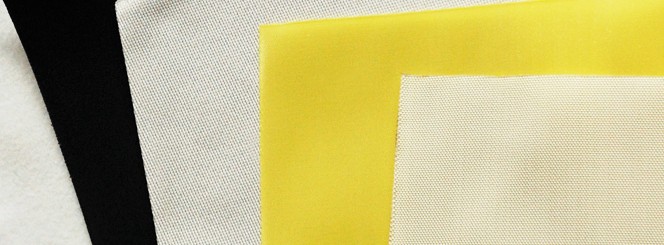Filter cloth
When fabrics for technical use are in discussion always costs and efficiency is the major point. The fabric must resist the heavy operation conditions and in the same time the costs should be not too high. In practice you know it is not easy to select the best fabric for your application. We like to take care and take over this problem.
We supply fabric and felt
- from the loom up to 2500mm wide
- heat-set, flamed and calendared
Our fabric is specifically based on
- adapted technology for each individual application of filtration
- low cost solutions to achieve economic targets in operation
- more than 20 years of experience in filtration technology
- competent service from engineering up to commissioning
- competent partners in filter fabric and filter bag manufacturing
The filter cloth useing for cake filtration is used as filter media to filter the solid cloth out of a suspension. The pore and mashsize are parameters for the efficiency of filtrate. The solution of the filter clothes should transfer the power from filter pressure to the filter stütze.
The filter cloth is exposed chemical and temperature of suspension. At the end of the filter process the cake was cleaning from the filter cloth. Therefore the suspension of the cloth should suitable.
Plain
Is one of the most simple weave patterns. The warp and filling threads cross alternately. Plain-woven fabrics are generally the least pliable, but the most stable. Characteristics: high particle retention and low resistance to blinding with average cake release properties.
Twill
Is a weave characterized by a diagonal rib or twill line. Each warp floats over at least two or more consecutive fill yarns, enabling a greater number of yarns per unit area than a plain weave, while not losing a great deal of fabric stability. Characteristics: average resistance to blinding, average cake release, good mechanical strength.
Satin
The face of the fabric consists almost completely of warp produced in the repeat of the weave. This is the most flexible of weave patterns and conforms very easily around most contoured surfaces. Satin weaves are usually four, five, eight, or twelve harness. Characteristics: excellent cake release, average retention, excellent resistance to blinding.
Calendering
Filter cloth is stabilized in preheating machinery. Final surface finishing and permeability is achieved with high speed calenders – heated and polished steel rolls – which press the fabric making the surface smooth and compact and further “set” the cloth.
Heat-set
Filter fabric is heat-set by heating the woven material in hot water up to 100°C. The effect of heat-set is a fast aging of the fabric to achieve the natural shrinkage of the filter fabric in a short time. After heat-set the filter fabric will not shrink anymore and the dimension of filter cloth is stable even when higher application temperature is applied to the fabric.
Edge Sealing
Synthetic sealing of the cloth is applied by liquid injection of the filter media which creates depth coating of the fabric at the joints of the filter press plate. This acts to prevent wicking action of the filtrate but is also very important when washing or air blowing the cake. The treatment prevents by-passing of the wash liquor or air blow.
Woven and Felted Belts
Woven and felted belts use clipper or alligator seams. In some cases filter belts are stitched onto the machine. Pressure filter belts are available for vertical filter presses and open monofilament constructions for belt filter presses. Specialty felted belts are used on corrugator machines.
zum Thema Filtegewebe.







